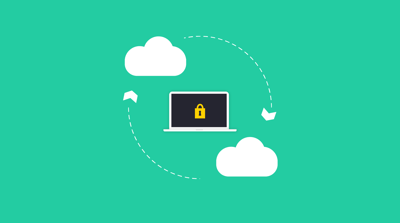July 9, 2025
 by Sudipto Paul / July 9, 2025
by Sudipto Paul / July 9, 2025
.png?width=690&name=G2CM_FI1061_Learn_Article_Images_%5Bwebsite_statistics%5D_V1a%20(1).png)
In modern organizations, decisions are rarely made without data. But raw numbers are just the beginning. The real value lies in understanding the uncertainty behind those numbers. Whether you’re running A/B tests, forecasting revenue, or evaluating employee feedback, your conclusions are only as trustworthy as the statistical methods behind them.
That’s where confidence intervals come in. They don’t just tell you what’s happening, they tell you how confident you can be in your interpretation of the data.
Confidence intervals allow business leaders, analysts, and data-driven teams to quantify the uncertainty around a sample estimate, assess whether changes in KPIs are statistically meaningful, and support high-stakes decisions with clearly defined margins of error.
In this guide, we’ll show you how confidence intervals are used across practical business contexts, from forecasting and financial modeling to customer surveys and AI models. You’ll also learn how to calculate them manually or with tools like Excel and Python, and how to interpret results for strategic planning.
A confidence interval is a statistical measure that estimates the probability of a specific value falling within a given range. The goal is to assess how valid the data output is, no matter how many times the test is run.
Confidence interval is typically used in hypothesis testing and regression analysis to measure the likelihood that future data points will align with existing patterns.
Essentially, confidence intervals help determine how certain or uncertain testers are about the accuracy of the sampling method. They’re used to understand whether data results are statistically significant or not.
For instance, a null hypothesis or a confidence interval with a zero value would not be statistically significant, which means the observed outcomes might be random rather than caused by specific factors.
For data analysts using AI, confidence intervals are essential. Even the best artificial neural networks are yet to fully mimic the human brain. Here, confidence intervals are used in testing and training models to quantify how reliable they are at making predictions or estimations. This is especially the case with AI regression modeling, where confidence intervals can determine how much trust should be placed in forecasting results generated by the model.
Confidence intervals can be applied to a wide range of business applications in different industries, from customer service to sales forecasting. Some of the most common include:
In business, decisions rarely come with perfect information. Leaders are constantly interpreting data riddled with uncertainty — market trends, user behavior, sales forecasts, customer feedback. Confidence intervals, built on concepts like variance and standard deviation, give decision-makers a quantitative measure of how much they can trust that data, reducing the risk of costly missteps.
Rather than relying on gut instinct or averages alone, confidence intervals help business teams interpret data with a built-in margin for error. Here’s how confidence intervals show up in critical decision-making scenarios:
A/B tests are widely used in marketing, web optimization, and pricing experiments. But the results are only as reliable as their statistical rigor. Confidence intervals help quantify how meaningful the observed differences are and whether they’re worth acting on.
Let’s say your marketing team tests two versions of an email:
That’s a 0.5% lift, but is it real, or just noise?
If you calculate a 95% confidence interval for the lift and get [+0.1%, +0.9%], this means:
Now you’re not just saying B won. You’re quantifying how much better it likely is. That confidence range helps justify a broader rollout, further testing, or strategic budget reallocation.
Business forecasts, whether for revenue, supply chain demand, or advertising costs, can mislead if they’re presented as a single point estimate. Confidence intervals allow teams to present ranges of possible outcomes, helping stakeholders plan for best-case, expected, and worst-case scenarios.
For example, instead of saying 'We project $1.2M in revenue next quarter', it's more transparent and actionable to say: 'we project $1.2M in revenue, with a 95% confidence interval of $1.08M to $1.35M.'
This has three major advantages:
Especially in industries like retail, SaaS, or logistics, this can help right-size hiring, inventory, or infrastructure spend.
Surveys and polls are commonly used to guide product direction, brand perception, or employee satisfaction initiatives. However, small sample sizes and variability often lead to misleading conclusions unless confidence intervals are applied.
Before acting on survey results, ask: how representative are these findings?
Suppose you survey 150 customers and find that 64% are very satisfied. If your 95% confidence interval is [57%, 71%], this tells you: there's a 95% chance that the true proportion of satisfied customers in your broader customer base lies between 57% and 71%.
This range helps prevent overreaction to small changes or small samples and builds more trust in stakeholder reporting.
The basic calculation for confidence intervals is the mean of an estimate plus and minus the variation in that estimate:
Confidence interval = Estimate mean ± Estimate variation
The range that results from this calculation are the numbers that the estimates should fall between, within a certain level of confidence.
To calculate a confidence interval, you’ll need four key pieces of information:
With these components, you can follow six calculation steps to calculate the confidence interval. This can be completed manually or using statistical software and AI assistance.
To calculate the mean, add up all sample values and divide the sum by the total number of values in the sample.
For example, if there are 10 samples, each of these numbers should be added together and then divided by 10. The confidence interval established by the end of the calculation gives testers the certainty or probability that an expanded dataset would result in the same mean.
The confidence interval of standard deviation is calculated by subtracting the mean from each sample value and then squaring each result. The mean of these values is then found by repeating the first step but with the new values – adding together all of the values and then dividing by the number of samples minus 1. The square root of this number is the standard deviation.
For instance, a sample set of values 34, 38, 25, and 63 would have a mean of 40 (total 160 divided by sample size 4.)
The standard deviation for this data set would look like:
(34 - 40)² + (38 - 40)² + (25 - 40)² + (63 - 40)² =
36 + 4 + 225 + 529 = 794
794/3 = 264.67
√264.67 = 16.27
The sample mean and standard deviation are used to calculate the standard error or how much the sample represents the total population. This calculation is the standard deviation divided by the sample size.
The margin of error is the number of random errors in the dataset. A larger margin of error means that there will be a lower confidence level, should the the same results be replicated. The standard error from step 3 is divided by 2 to find this number.
The confidence interval can be calculated with all of these values in place. Using a confidence level of 99 or 95, the standard in this type of statistics, the margin of error must be added and subtracted from the sample mean. This results in an upper and lower limit of confidence, or the confidence interval.
The interval number will outline the probability of repetition for similar future samples. Higher confidence shows a higher chance that repetition will occur. Using the example dataset, the confidence interval would be:
Sample mean: 40
Standard deviation: 16
40 ± 16 = 24 to 56
This means that, with a 95% confidence, the mean of future results should be between 24 and 56. Expanding this to 99%, the calculation becomes 40 ± 21 = 19 to 61. With 99% confidence, we can say that any future dataset mean will be between 19 and 61.
From here, the confidence interval p-test can be applied to determine whether the results are statistically significant. Conventionally, the p-value is set as p<0.05. The p-value is a fixed percentage probability rather than a range like a confidence value. This is why ranges are typically preferred, as it provides room for error.
The choice between confidence levels depends on how certain the tester wants to be. For industries that require high certainty or are strictly controlled by regulatory compliance, like medical or financial, a 99% certainty is often used. This means that testers are almost completely confident in the resulting confidence interval. As a result, the interval is usually wider to be a more conservative estimate and results in less chance of error.
With a 95% confidence level, the certainty is less defined so the confidence interval can be narrower. This makes it more precise, but also means that there’s a greater risk of future studies or datasets missing those confidence interval parameters. Businesses that work within a wider margin of error and can afford to take these risks will typically use a 95% confidence, rather than 99%.
Understanding the theory behind confidence intervals is useful but applying them with real data in your day-to-day tools is where confidence intervals become powerful. This section walks through how to calculate confidence intervals in Excel, Python, and R, with code or formula examples you can adapt for your datasets.
Whether you're building a sales forecast, analyzing a user survey, or comparing performance metrics, these examples will help you get from raw data to actionable ranges.
Excel is often the first stop for business analysts or marketers running statistical evaluations. While it doesn’t have a built-in “confidence interval” function, you can calculate it using basic statistical formulas.
Example: Calculate a 95% confidence interval for time spent on a website.
Let’s say you have a sample of 10 user session times in seconds: 53, 60, 58, 62, 57, 59, 55, 63, 58, 61
Find the mean:
Use =AVERAGE(A1:A10) → Result: 58.6
Find the standard deviation:
Use =STDEV.S(A1:A10) → Result: 2.87
Determine the sample size:
10 data points, so n = 10
Find the standard error (SE):
=STDEV.S(A1:A10)/SQRT(COUNT(A1:A10)) → Result: 0.91
Find the confidence interval (95%):
Use CONFIDENCE.NORM(alpha, standard_dev, size)
=CONFIDENCE.NORM(0.05, 2.87, 10) → Result: 1.78
Construct the interval:
Lower bound: 58.6 - 1.78 = 56.82
Upper bound: 58.6 + 1.78 = 60.38
You can be 95% confident that the average session time lies between 56.82 and 60.38 seconds.
Python is widely used in data science teams thanks to its flexibility and powerful libraries. Here’s how to calculate a confidence interval using scipy.stats.
Sample code using the same 10 values:
import numpy as np
from scipy import stats
data = [53, 60, 58, 62, 57, 59, 55, 63, 58, 61]
mean = np.mean(data)
sem = stats.sem(data)
ci = stats.t.interval(0.95, df=len(data)-1, loc=mean, scale=sem)
print(f"95% Confidence Interval: {ci}")
Output:
95% Confidence Interval: (56.82, 60.38)
This matches Excel’s output but Python can scale this to millions of rows or be built into automated reports, dashboards, or machine learning pipelines.
R is a statistics-first programming language and provides confidence intervals using just a few lines of code. Perfect for data analysts, researchers, and economists.
Input:
data <- c(53, 60, 58, 62, 57, 59, 55, 63, 58, 61)
t.test(data, conf.level = 0.95)
Output:
95 percent confidence interval:
56.82 60.38
Just like Python and Excel, the result is consistent. R also gives you a t-test result, making it ideal for hypothesis testing workflows.
Before you decide which tool to use, consider your workflow:
Not all datasets will provide the same type of data and can be used in the same way to calculate confidence intervals. True/false or yes/no data will need different formulas compared to datasets full of different numbers. But, there are ways to do this and still calculate accurate confidence intervals, no matter what the data looks like.
Normally distributed data forms a bell shape when plotted as a visual graph, with the mean in between and the rest of the data forming slopes on either side in an evenly distributed way. The area under the curve in a bell graph represents the cumulative distribution of the dataset and the corresponding probabilities.
In normal distribution, this area helps to calculate the Z-score, the probability of a specific outcome given the distribution. For instance, the area under the curve could show 0.5. This means that there is a 50% probability for that section of the dataset. In industries like finance, the area under the curve helps teams evaluate possible returns across different market conditions and the probability of those returns occurring.
To find the upper and lower limits of a curve on a two-sided hypothesis in a bell graph, 2-alpha testing can determine where each side of the data slope ends. This is done to account for the true value of a data parameter being higher or lower than the range given by the confidence interval.
Binomial distribution is the probability that a value will take one of two possible values under a certain set of parameters of assumptions. The core belief with this data is that there is only one possible outcome for each trial, that each has the same probability of success, and each trial is mutually exclusive.
Since there is only one of two possible outcomes, binomial distribution is typically represented as 1 (success) or 0 (failure). Binomial confidence is usually looked at as a value of uncertainty, rather than certainty.
There are several formulas that can be used to calculate this, depending on the type of data being used. The Wilson Score Interval, Jeffreys Interval, and Clopper-Pearson Interval are the most common.
Confidence intervals are powerful tools but only when used correctly. Misinterpreting or misapplying them can lead to overconfident decisions, misallocation of resources, or even missed opportunities. This section highlights the most common pitfalls professionals encounter when working with confidence intervals and how to avoid them.
Before diving into the pitfalls, it’s important to remember: a confidence interval does not guarantee that future results will fall within the range. It simply expresses a level of certainty, based on sample data, about where the true population parameter is likely to lie.
This is arguably the most widespread mistake.
People often assume a 95% confidence interval means: 'There is a 95% chance the true value is between X and Y.'
But that’s not correct. The statistical meaning is: 'If we were to repeat this experiment or sampling process 100 times, about 95 of the resulting intervals would contain the true population parameter.'
So when a report says the confidence interval for customer NPS is [45, 60], you’re not saying there’s a 95% chance the real NPS is in that range. You're saying the method of interval estimation is 95% reliable across many samples.
Misunderstanding this can lead teams to make overly confident claims in stakeholder communications or performance reviews.
Confidence intervals narrow with large sample sizes and widen with small ones. Yet many reports don’t communicate this context clearly.
For example:
Always check:
If your data is messy, skewed, or small, your confidence interval may look clean, but the underlying assumptions are broken.
Yes, 95% and 99% are industry standards. But blindly using them without understanding the cost of Type I vs. Type II errors can be misleading.
Use higher confidence (99%) when:
Use lower confidence (90–95%) when:
Confidence intervals assume that your sample is random and representative of the population. But in business settings, data often comes from:
In these cases, even a tight confidence interval might not reflect the broader reality, which is far more dangerous than having no interval at all.
Always ask:
Many business users aren’t trained in statistics. Showing them a number like: “Conversion rate = 12.4% (95% CI: 10.9%, 13.9%)”
It may go unnoticed or unappreciated. Visualizing the range as error bars, shaded bands, or traffic light indicators often makes it far more digestible.
Better still, pair confidence intervals with:
Confidence intervals are only valuable when they’re interpreted and acted upon correctly, not just mathematically calculated.
Confidence intervals aren’t just theoretical tools. They are essential instruments of risk management in data-driven decision-making. Whether you’re testing a new marketing campaign, refining your sales forecast, or reporting on user behavior, confidence intervals help answer the critical question: how sure are we, really?
When used properly, confidence intervals:
To take the next step:
Find the best statistical analysis software for your business and perform complex tasks, all while creating easy-to-understand presentations of the data.
Sudipto Paul is a former SEO Content Manager at G2 in India. These days, he helps B2B SaaS companies grow their organic visibility and referral traffic from LLMs with data-driven SEO content strategies. He also runs Content Strategy Insider, a newsletter where he regularly breaks down his insights on content and search. Want to connect? Say hi to him on LinkedIn.
If you’re working hard to protect and save your data, you want to make sure you’re employing...
 by Alexa Drake
by Alexa Drake
You’ve just landed a phone interview—congratulations!
 by Derek Doeing
by Derek Doeing
You work hard for the money, but are you really getting paid what you deserve?
 by Lauren Pope
by Lauren Pope
If you’re working hard to protect and save your data, you want to make sure you’re employing...
 by Alexa Drake
by Alexa Drake
You’ve just landed a phone interview—congratulations!
 by Derek Doeing
by Derek Doeing


